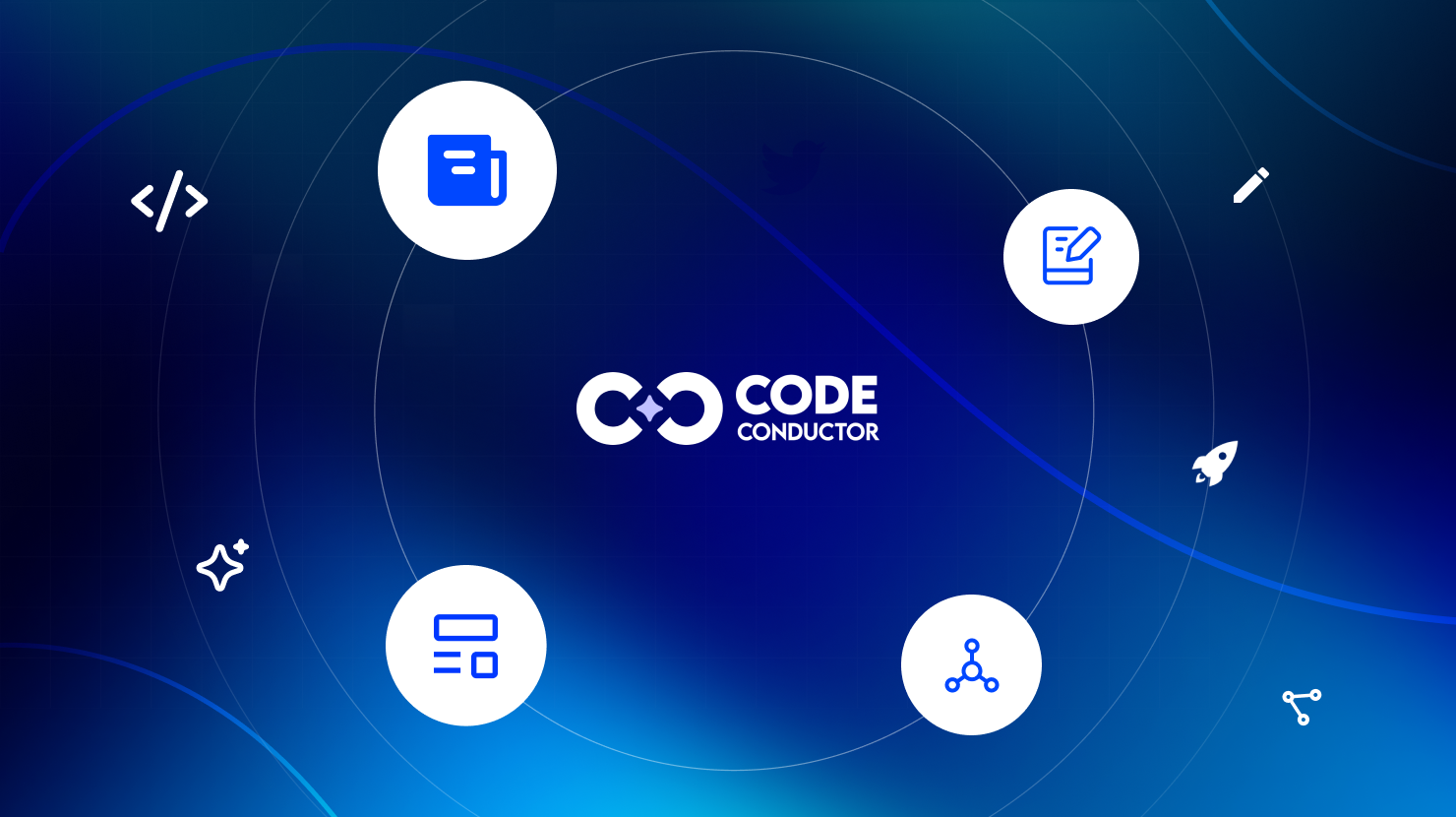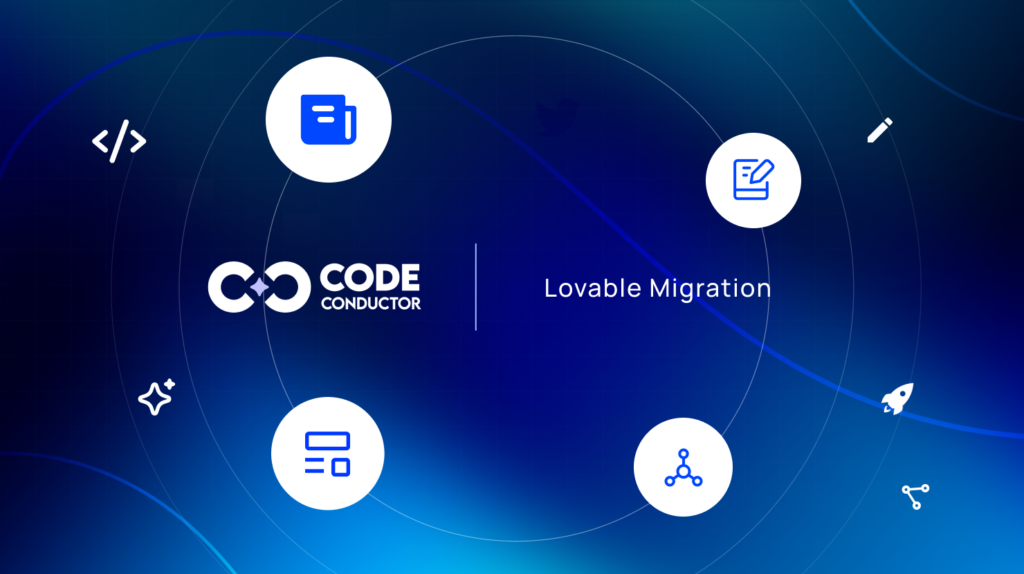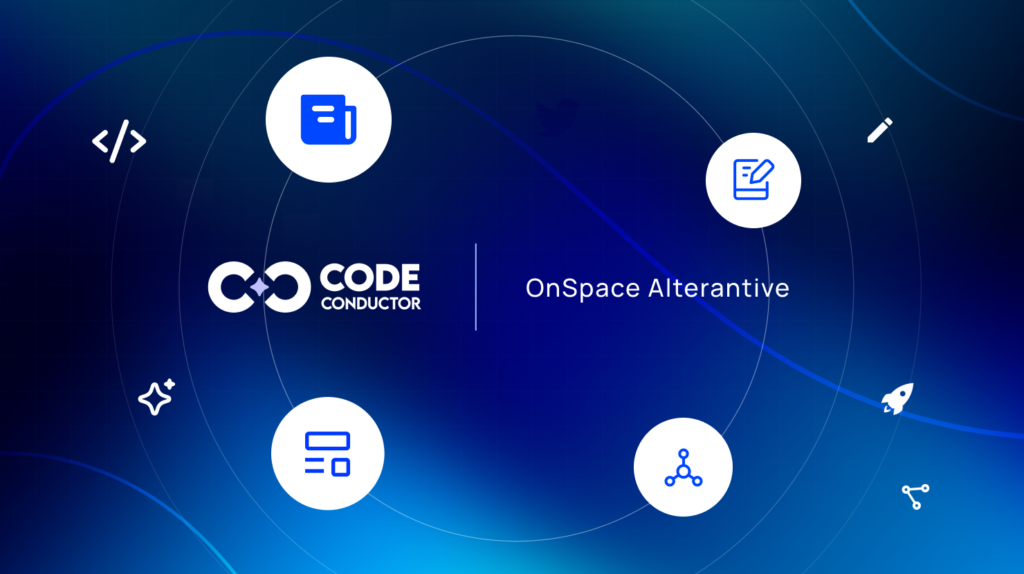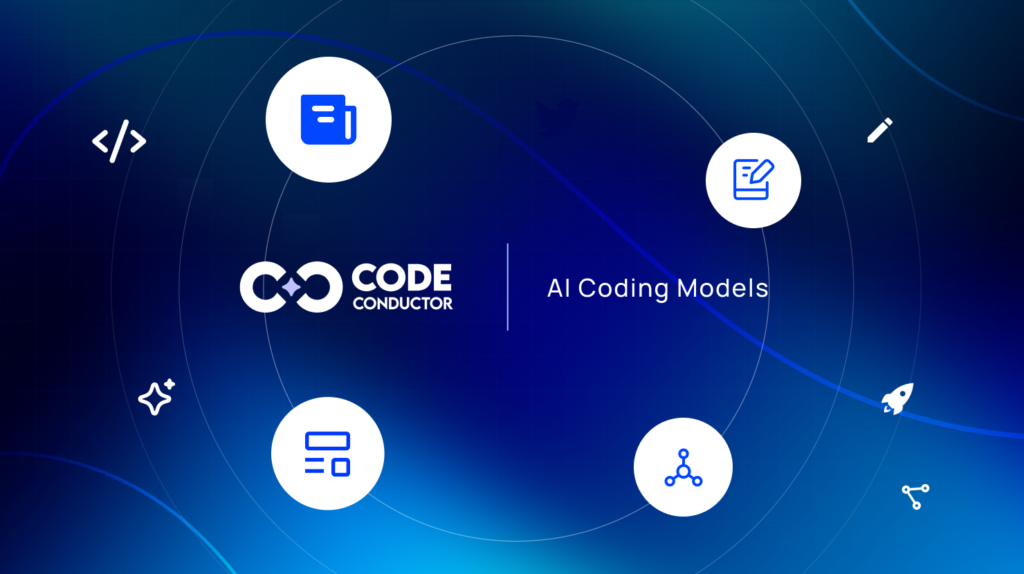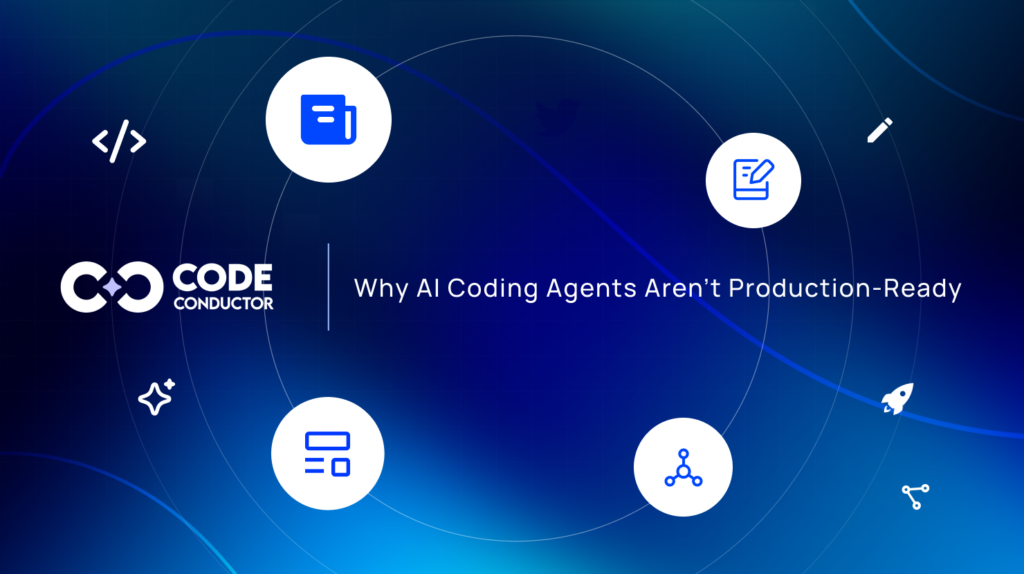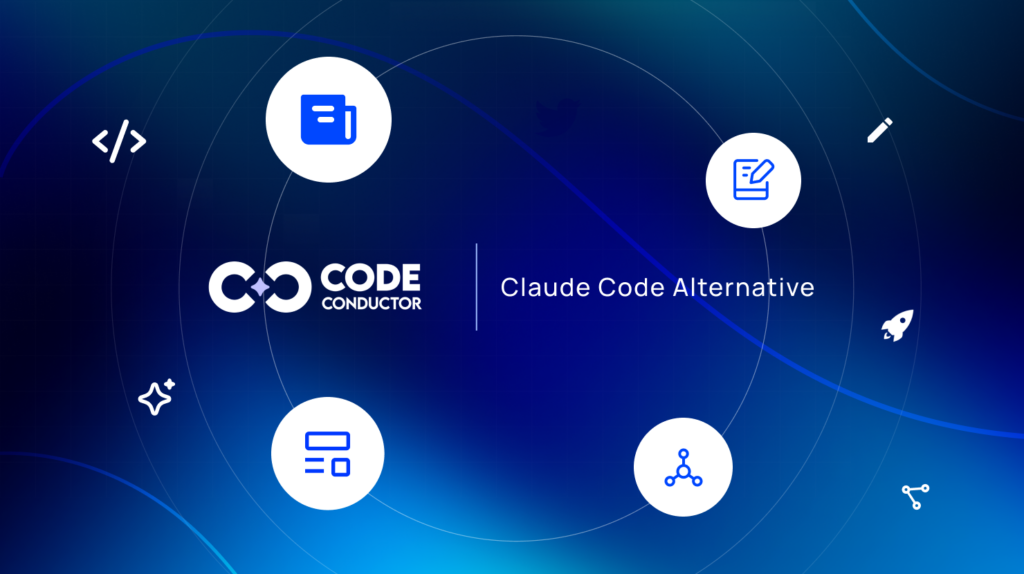In This Post
- TL;DR
- OpenAI DevDay’s Big Reveal
- How OpenAI AgentKit Fits Into the Workflow Landscape
- Key Features of OpenAI AgentKit
- Why AgentKit Doesn’t Solve Production Challenges (Yet)
- Why Shipping Is Still Your Problem
- CodeConductor’s Role: Turning Flows Into Real Products
- Predictive POV: What’s Next for AgentKit & the Agent Layer
- What to Watch Next
- The Future Is Both Tools + Platform.
- Frequently Asked Questions (FAQs)
excited for dev day tomorrow!
got some new stuff to help you build with AI.
— Sam Altman (@sama) October 5, 2025
TL;DR
- OpenAI launched AgentKit and Agent Builder at OpenAI DevDay 2025, introducing a visual canvas, connector registry, and evaluation tooling to accelerate the development of AI agents.
- It’s a major step in closing the prototyping gap, giving developers a powerful orchestration layer.
- However, production challenges such as deployment, rollback, observability, and cost control still persist.
- That’s where engineering platforms like CodeConductor step in: bridging the gap between visual flows and stable production environments.
- The future isn’t “canvas vs code”, it’s canvas + production layer.
See More: n8n vs OpenAI Agent Builder vs Zapier (2025)
OpenAI DevDay’s Big Reveal
On October 6, 2025, OpenAI unveiled AgentKit, a comprehensive toolkit designed to help developers build, deploy, and optimize autonomous AI agents directly inside the OpenAI platform. 👉 Read the official announcement
At the heart of this release is Agent Builder, a drag-and-drop canvas that enables the visually orchestrating of agent workflows. It lets you wire up connectors, logic nodes, and guardrails without manually coding orchestration layers, positioning OpenAI directly against tools like Zapier, n8n, and Retool.
The messaging is clear: OpenAI wants to give you a “Canva for agents” and take over the “plumbing” burden. However, as we dig in, the bigger test isn’t creation; it’s the reliable and maintainable shipping of agents at scale.
See More: AI Coding Tools: Why “Vibe Coding” Cleanup Specialists Are in High Demand
How OpenAI AgentKit Fits Into the Workflow Landscape
Visual workflow tools have already changed how automation is built. Zapier made “if-this-then-that” logic accessible to non-dev teams. n8n provided developers with more flexibility and extensibility. Retool empowered internal tool builders to ship UI-driven apps quickly.
OpenAI AgentKit extends this model, but for reasoning + tool-using agents:
- Zapier / n8n = API connectors + logic
- AgentKit = reasoning, tool integration, evaluation, UI
- CodeConductor = deploying, monitoring, and scaling those workflows
By integrating visual orchestration with model-driven agents, OpenAI is transforming from a model provider into a full-fledged agent platform.
Key Features of OpenAI AgentKit
According to OpenAI, AgentKit introduces several core components:
- Agent Builder
A polished drag-and-drop UI to compose multi-agent workflows with branching logic, inline testing, and versioning. - Connector Registry
A centralized hub for integrating APIs and third-party tools (e.g., Google Drive, Slack), making workflows more modular. - ChatKit
Prebuilt chat UI widgets for embedding agent interactions directly into apps or websites. - Enhanced Evaluation (Evals)
Improved tools for grading traces, prompt optimization, and multi-model evaluation. - Reinforcement Fine-Tuning
Allows agents to improve iteratively through feedback loops, pushing toward autonomous optimization.
Together, these make AgentKit a serious competitor to existing orchestration tools. But the critical difference is deep integration with OpenAI’s models and infra, giving developers a frictionless way to go from idea → flow.
Why AgentKit Doesn’t Solve Production Challenges (Yet)
Building an agent prototype is now easier than ever. But shipping production-grade agents still requires capabilities that go beyond what a canvas can provide:
- Rollback & Versioning: Visual flows need controlled release cycles, Git integration, and safe rollback paths.
- Observability: Traces are helpful, but full observability requires metrics, alerts, and dashboards to provide comprehensive visibility.
- Deployment Pipelines: Moving from a canvas to staged environments (dev → staging → prod) is still manual.
- Security & Guardrails: Agent behaviors need strict validation, retries, and fallback logic.
- Cost Optimization: Multi-tool and multi-model workflows can lead to excessive token usage without proper batching or caching.
- State Management: Real-world agents need persistent memory, concurrency handling, and schema validation.
This gap between prototyping and production is where most AI pilots fail. In fact, MIT research suggests that over 95% of AI pilots never reach production, not because the models themselves don’t work, but because the necessary infrastructure is lacking.
See More: Why 80% AI Projects Fail? Mistakes & Solutions to Succeed
| Feature | Zapier / n8n | OpenAI AgentKit | CodeConductor (Engineering Layer) |
|---|---|---|---|
| Visual Workflow Builder | ✅ | ✅ | ❌ (Code-first) |
| AI Reasoning & Tool Use | ❌ | ✅ | ✅ |
| Deployment & Rollback | ❌ | 🟡 Basic | ✅ |
| Observability & Monitoring | ❌ | 🟡 Tracing Only | ✅ |
| Cost & Resource Controls | ❌ | ❌ | ✅ |
| State & Memory Management | ❌ | 🟡 Experimental | ✅ |
AgentKit closes the gap between Zapier and real AI orchestration, but it still needs a production-grade backbone.
Why Shipping Is Still Your Problem
Building a working agent prototype is one thing. Running it in the wild, maintaining iteration cycles, and delivering user trust are other challenges. Industry research suggests that 95% of AI pilots never ship, not because of the models themselves, but due to a gap in surrounding infrastructure.
Here’s how that gap typically plays out:
- From Visual Flow to Code/Infra
When your visual prototype receives real usage, you’ll need to translate the flow into code that can be integrated with caching, databases, error handling, retry logic, and infrastructure scaling. - Version Control / Rollback / A/B Tests
You’ll want safe ways to change logic incrementally, test new branches, and roll back failures. Canvas editors alone aren’t enough — they need to be tied to deployment pipelines, Git, CI/CD, and other related systems. - Logging, Metrics & Alerts
Traces help you see the steps, but true observability needs integration with logging systems, dashboards, error alerts, and business metrics. - Resource Efficiency & Cost Control
Agents that call models and external APIs can cost money. You’ll need to batch, debounce, cache, and optimize to avoid overspending. - Evolving Logic, Feedback Loops, Learning
You’ll want agents to improve over time via reinforcement signals, fine-tuning, or prompt optimization. That requires feedback systems and guardrail policies.
That’s where a solid engineering layer must wrap around the canvas: to enforce maintainability, safety, and lifecycle management.
See More: Top 7 Vibe Coding Tools for Startups & Enterprises in 2025
CodeConductor’s Role: Turning Flows Into Real Products
This is where CodeConductor fits in. AgentKit helps teams imagine, prototype, and orchestrate AI workflows. CodeConductor makes those workflows reliable, scalable, and safe to ship.
- Vibe-coded to Production: Convert visual flows into maintainable, architecture-aware code.
- Staging, Rollouts & Rollback: Integrate with deployment pipelines, version control, and safe release mechanisms.
- Monitoring & Alerts: Full observability for agent behavior and business metrics.
- Cost Guardrails: Batch, cache, and optimize resource usage.
- Feedback Loops: Close the loop between evaluations and production improvements.
See More: Finish Vibe Coded Apps With CodeConductor [2025]
In other words: AgentKit builds the prototype. CodeConductor ships the product.
Predictive POV: What’s Next for AgentKit & the Agent Layer
Here’s how the next 3–6 months might unfold, along with the potential bumps enterprises may encounter along the way.
In the near term, expect public case studies as early adopters transition from prototypes to everyday use, such as support bots, knowledge assistants, or pipeline automation. The speed and variety of connectors built by the community will be a key signal of AgentKit’s ecosystem maturity.
As usage scales, friction will emerge in areas where the visual layer can’t fully manage memory consistency, debugging complex agent logic, strict auditing, and controlling runaway costs. Real-world data is messy, and agents will need robust fallback and error-handling strategies to cope with these complexities.
Strategically, OpenAI is making a bet: by controlling the workflow layer, it locks in developers and captures more of the value chain. AgentKit is not just a feature; it’s a foundation for their vision of “agentic software as infrastructure.”
See More: Vibe Coding for Enterprise: Key Benefits, Risks, & Practices
What to Watch Next
OpenAI’s AgentKit is still evolving. Some key trends to keep an eye on:
- Connector Ecosystem: Will a marketplace of third-party connectors emerge, like Zapier’s app store?
- Multi-Agent Orchestration: How will complex, multi-agent handoffs be managed?
- Hybrid Deployments: Will developers run part of the flow locally (for latency/compliance) and part in OpenAI’s cloud?
- Reinforcement Loops: How accessible will continuous fine-tuning be for enterprise teams?
- Enterprise Guardrails: How deep will security and audit features go?
OpenAI’s clear internal use of AgentKit for sales, HR, and support shows confidence, but production teams will need complementary layers to succeed.
The Future Is Both Tools + Platform.
OpenAI’s AgentKit represents a significant step toward simplifying agent development. It brings visual flows, connector orchestration, UI embedding, and evaluation tools into one integrated platform.
But building an agent isn’t where the work ends. Real-world deployment demands durability: rollback, observability, cost control, and scalable state management.
The winners will be those who combine fast prototyping (AgentKit) with a strong production infrastructure (CodeConductor) — because the future of AI isn’t just canvas or code, it’s canvas and infrastructure.
CodeConductor helps you take your AgentKit prototypes and turn them into production-ready, monitored, scalable systems—without starting from scratch.
See how it works →
Frequently Asked Questions (FAQs)
1. What is OpenAI AgentKit?
OpenAI AgentKit is a suite of tools introduced at DevDay 2025 to help developers build, orchestrate, and evaluate AI agents. It includes a drag-and-drop Agent Builder, a Connector Registry, ChatKit UI components, evaluation tooling, and reinforcement fine-tuning features, all tightly integrated with OpenAI’s platform.
2. What is the difference between AgentKit and Agent Builder?
AgentKit is the complete toolkit that includes Agent Builder, connectors, evaluation tools, and chat components. Agent Builder is the visual interface within AgentKit that enables you to design and orchestrate agent workflows without manual coding.
3. How does OpenAI AgentKit compare to Zapier or n8n?
Zapier and n8n are visual automation tools focused on connecting APIs and simple logic flows. AgentKit adds reasoning agents, tool use, and evaluation to that mix. However, it still lacks production-grade features like rollback, observability, and deployment pipelines, which is where engineering platforms (like CodeConductor) complement it.
4. Can I use OpenAI AgentKit for production deployments?
You can deploy flows created in AgentKit; however, the tooling currently focuses on prototyping and orchestration, rather than full production operations. For large-scale, critical systems, you’ll need additional infrastructure for monitoring, state management, cost control, and versioned deployments.
5. Why do I need a platform like CodeConductor with AgentKit?
AgentKit is excellent for building and testing workflows quickly. However, once you require staging environments, rollback capabilities, cost guardrails, and observability, you need an engineering layer that can safely transition prototypes to production. CodeConductor provides that missing layer without discarding your visual work.

Founder CodeConductor

